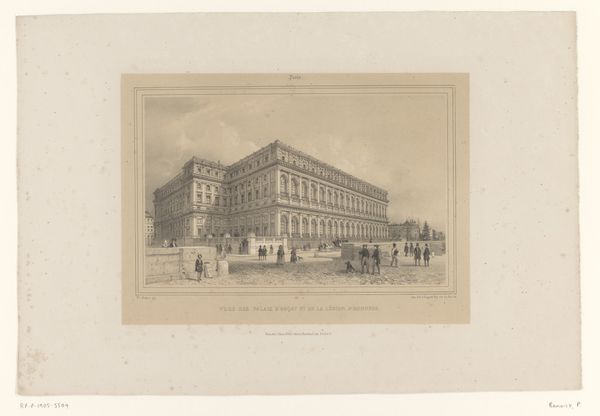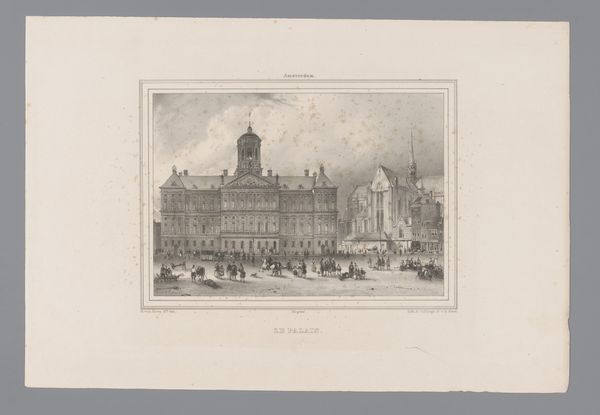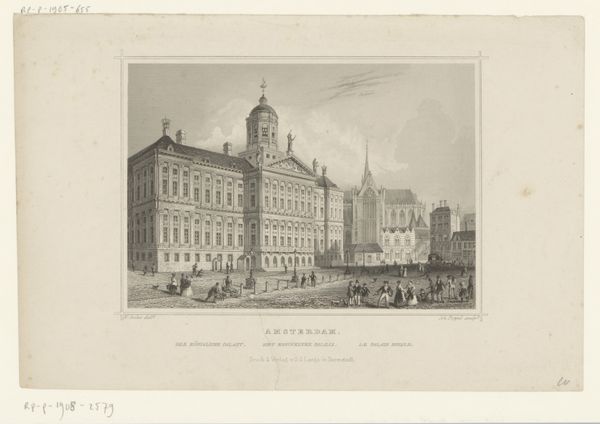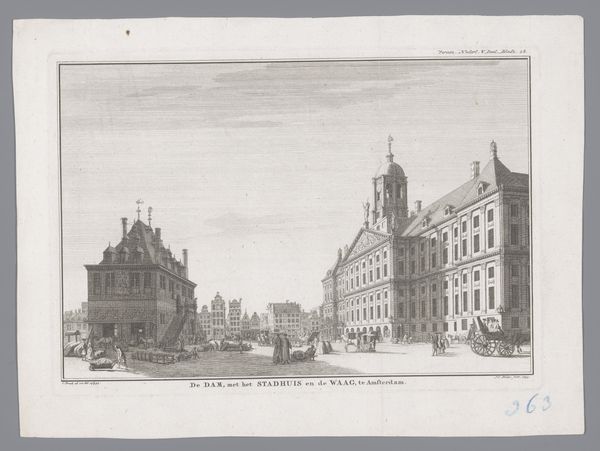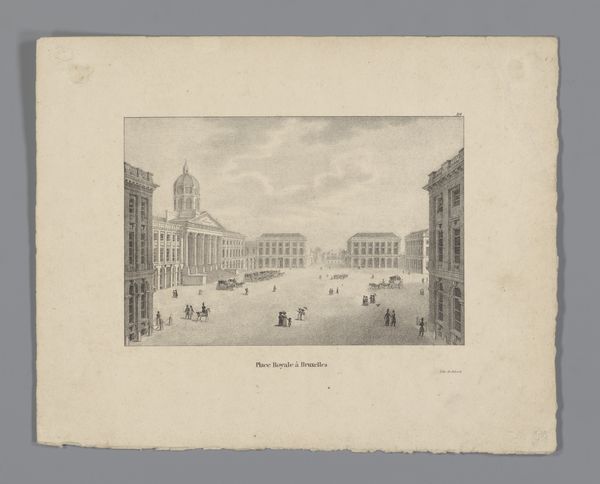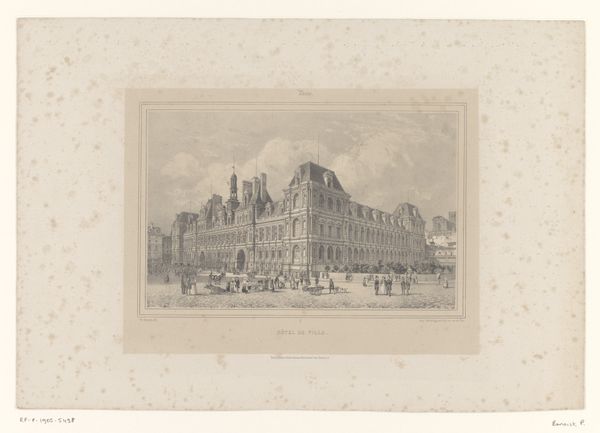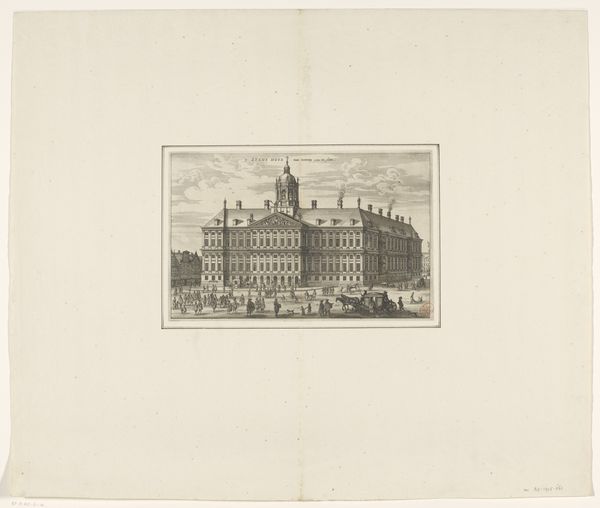
drawing, ink
#
drawing
#
neoclacissism
#
landscape
#
ink
#
cityscape
#
realism
Dimensions: height 260 mm, width 322 mm
Copyright: Rijks Museum: Open Domain
Curator: Before us is a cityscape simply titled "Gezicht op het Koninklijk Paleis te Amsterdam," or "View of the Royal Palace in Amsterdam." Created between 1810 and 1830 by an anonymous artist, this drawing renders the Palace and its surroundings using ink on paper. Editor: It's austere, isn't it? The pale grey ink gives everything a subdued feel. I find myself drawn to the tiny figures, dwarfed by the architecture, suggesting a particular power dynamic between citizen and state. Curator: Absolutely. The Neoclassical architectural style, visible in the Palace's symmetry and ordered façade, reflects the period’s fascination with reason and order. The drawing’s realism offers us insight into Amsterdam’s urban landscape at that time. Look at the subtle variations in line thickness achieved by the artist and the visible effort put into this craft to emphasize the building's scale. Editor: And yet, it’s more than just an objective record. The presence of carriages, strolling figures, and even what appears to be a dog in the foreground brings life to the scene. One begins to imagine how art displayed in public galleries served social, and, inevitably, political ends by glorifying centres of power, especially in rapidly shifting geopolitical settings. Curator: Precisely! While rendered realistically, the materials – ink, paper, drawing tools– invite inquiry. Who was consuming artworks such as these and where, if not in galleries? What’s compelling is not simply the depiction, but the circulation and purpose of images like these, and for whom they offered material and representational value. Editor: Yes, it brings forth that broader question. How do institutions shape our understanding and reception of art? In this case, what message does the Rijksmuseum convey by presenting this drawing today? Curator: Indeed, thinking about the art market and the systems of patronage is also vital here. The labor invested and the intention behind crafting this piece… Editor: Well, regardless of those original intentions, the drawing prompts us to consider the evolving role of art. Curator: I find its ability to raise further, tangible questions for us today truly remarkable.
Comments
No comments
Be the first to comment and join the conversation on the ultimate creative platform.
